Published: 2013
Book dedicated to the Kalashnikov Bayonet

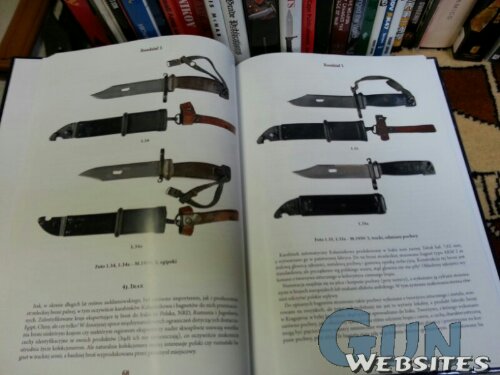
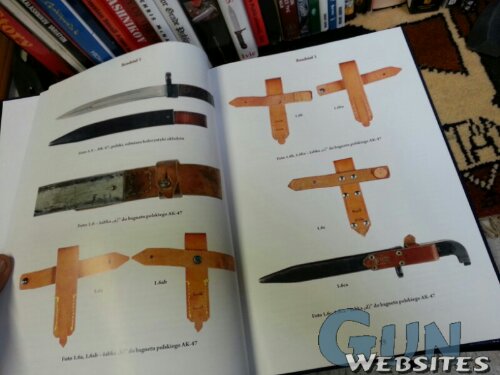
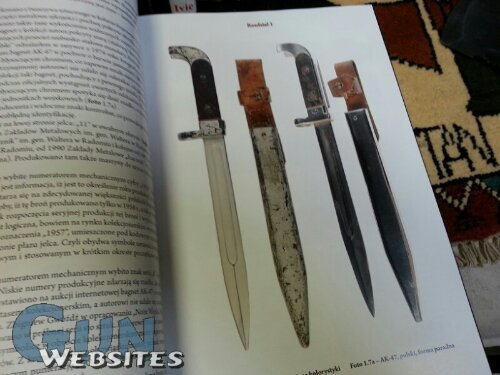

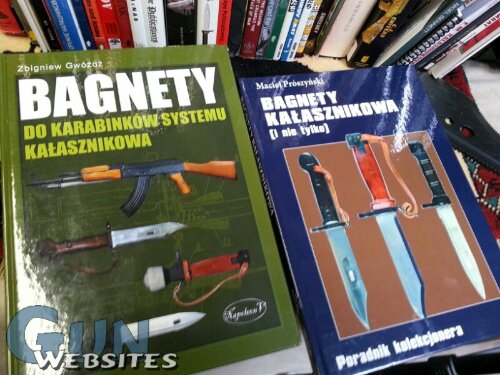
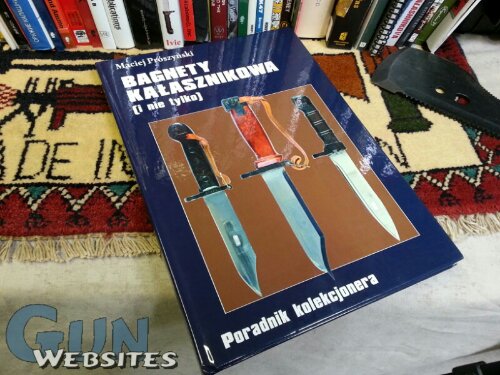

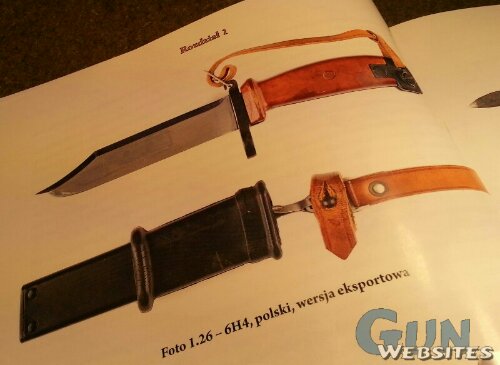


Published: 2013
Book dedicated to the Kalashnikov Bayonet











Bagnety do Karabinkow Systemu Kalasznikowa
Bayonets to Rifles Kalashnikov System
Zbigniew Gwozdz
178 Pages
Published 2012

hunting knife, HO-1 “(NO 101), developed on the basis of the bayonet
noz mysliwski ,,HO-1″(NO 101) opracowany na bazie bagnetu
Gumowa atrapa karabinka AK dugosc calkowita 100 cm masa ok. 2,75 kg (fot. producenta)
Rubber dummy rifle AK Total External Length 100 cm Weight approx 2.75 kg (Fig. producer)

Bagnety pochodzace z pierwszej serii mialy znak zakladu produkcyjnego oraz rok produkcji tloczony na prawej stronie jelca (fot. A. Adamczyk)
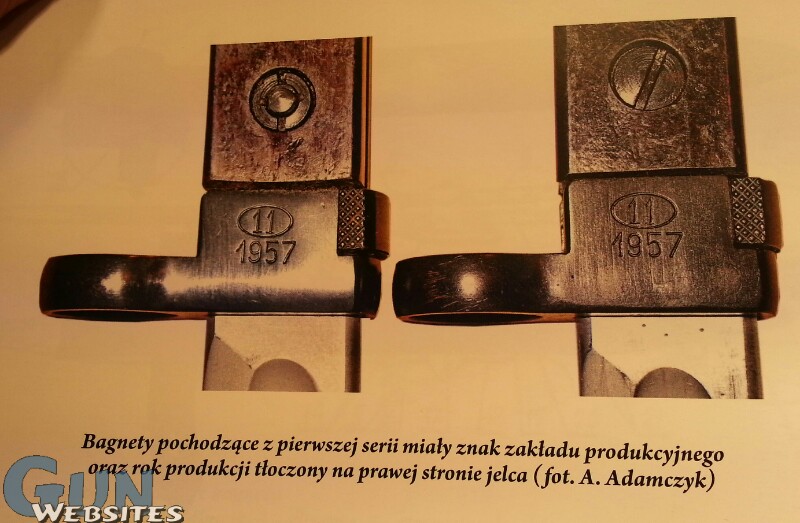
Bayonets originating from the first series were to sign production plant and year of manufacture stamped on the right side of the handguard (photo by A. Adamczyk)

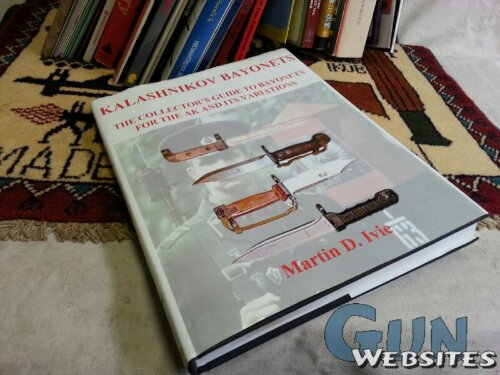
Chapter One
There are four basic knife types found for AK bayonets plus some variations, which do not fall in these categories. There are also three basic scabbard types. Combinations of these types are what allow for identification of the country of origin for these bayonets and the type of AK they were originally used with.
In this book the bayonets have been classified into four basic knife types as follows:
AK47 Type – characterized by ears on the pommel, which go around the barrel of the rifle to aid in mounting; a handle with a scale on each side; and a long, straight spear point type blade with fullers on each side. (See figure 1 .A.)
AKM Type I – characterized by a large bulbous handle of plastic material, which has a slot for a bayonet lug for attachment to the rifle and a hole for a wrist strap and a Bowie type blade with a clip point and sharpened only on one side and without any fullers. (See figure 1.B.)
AKM Type Il/Early AK74 – bayonet lug and a hole for a wrist strap; a solid plastic handLe; and, again, a Bowie type blade with a clip point and sharpened only on one side and without any fullers. (See figure l.C.)
AK74 Type – characterized by a return to a solid plastic handle without a steel pommel but with ridges which substitute for finger grooves; and a return to a spear point blade with a very unique sharpening pattern and again no fullers. (See figure 1 .D.)

The other knife type variations include the East German KM87 bayonet for their AK74 variant, the MpiKM(S)74, the distinctive knives North Koreans used for their late AK47 and AKM type rifles, the bayonets used by the Finns for the Valmet series of rifles, the bayonet used by India for the INSAS Rifle, the Czech CZ58 bayonets and the Chinese Folding Spike and Type 81 bayonets. These will be shown and discussed in the relevant chapters.
From Page 3 Kalashnikov Bayonets
© 2002 by Martin Ivie
Reprinted with permission of the author
Kalashnikov Bayonet Scabbard Variations
Chapter One, cont.
The three scabbard variations have been classified as follows:
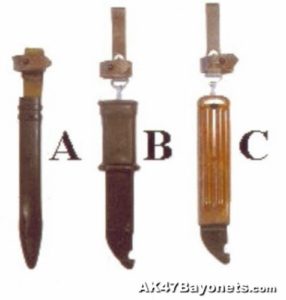
AK47 Type – straight steel scabbard with webbing belt loop permanently attached via metal loops welded to the scabbard. (See figure 2.A.)
AKM/AK74 Steel Type — steel scabbard with a wire-cutter attachment riveted to the
lower end, a rubber insulator installed around it at the throat and a belt loop attached to a welded ring via a snap hook or a frog type belt loop. (See figure 2.B.)
AKM / AK74 Plastic Type — plastic scabbard usually with wire-cutter attachment molded in to the lower end; and usually, a belt loop attached to a molded in bar via a snap hook. (See figure 2.C.)
As with the knives, the Valmet, CZ58 and Type 81 types will be discussed in the appropriate chapters.
Another type-classification term used in this book is AKM Type I transitional bayonet.
This is used to refer to the combination of an AKM Type I knife and an AKM/AK74
Plastic Type scabbard.

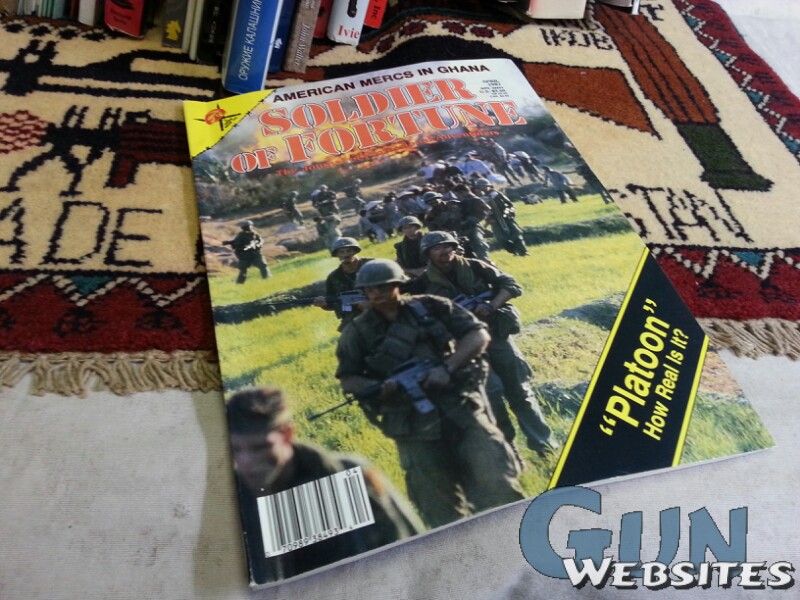

Soldier of Fortune Magazine
April 1987
SOF Inspects the Sharp End of the AKM
AKM bayonets are both fascinating and varied. Left to right: Hungarian, Yugoslav, East German, Romanian, Egyptian, Soviet (attached to rifle in the wire-cutting position), PRC black and red) and Polish. In the foreground are Hungarian and Yugoslav fighting knives and another Russian AKM bayonet.
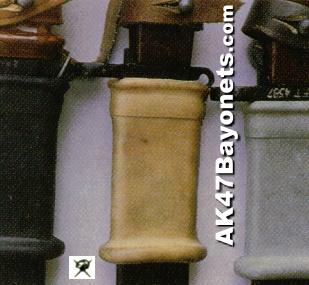
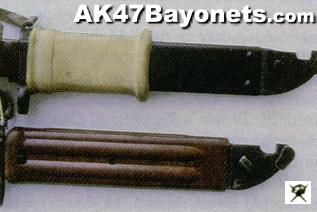
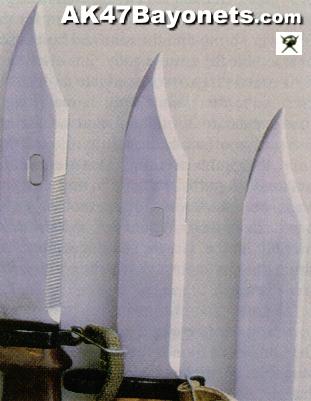


!! Look at the frog on the red Chinese AKM Type II in this picture from the article !! Have never seen one of those since this photo 
Check out the other AK47 Collector Books